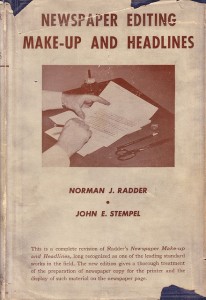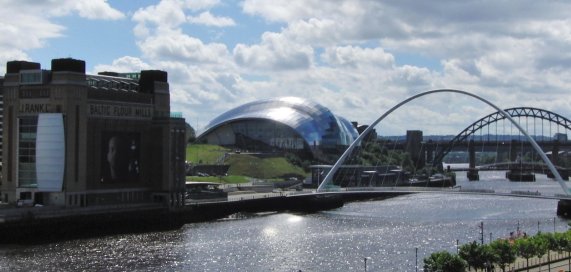
Continuing our theme of ‘Northern Energy’, we were in Newcastle upon Tyne this week and, on Friday afternoon, took time to visit Seven Stories, the National Centre for Children’s Books. They have an important exhibition and research project into the donated archive of the writer Michael Morpurgo. Below is what we thought.
”Michael Morpurgo Exhibition 2 July 2016 – Sunday 2 July 2017, Newcastle UK. A Lifetime in Stories.
Seven Stories, The National Centre for Children’s Books introduces an exclusive exhibition drawn directly from Michael Morpurgo’s extensive archive donated to Seven Stories in 2015”.
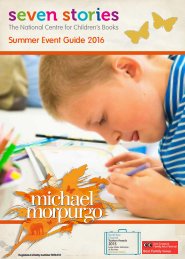
Through one of our our sister projects, Books go Walkabout, an international delivery system to get authors, illustrators and poets, and their books, to corners of the world previously unreached, we have an abiding interest in children’s literature as you would expect.
The Seven Stories Morpurgo exhibition is certainly about a fantastic canon of work dedicated to the young imagination. However, the research team have extracted illustrative and delightful insights into, and evidence of, the writing process, using the archive generously donated to the Centre by Michael Morpurgo in 2015.
What the display and featured narrative does offer, in the broadest terms, is an insight into the creative process, the research and writing of a book, much of which in this Seven Stories gallery has taken place before the arrival and dominance of the word processor.
Not only an exhibition in praise of the work of Michael Morpurgo, but an illustration in itself of what can be achieved with a simple notebook and a pen or pencil. The imagination does not need an elecrical socket and plug to thrive apparently!
Some key exhibition elements:
Michael Morpurgo was born in 1943, and his early life was beset by sadness and conflicting tensions. It was interesting to see the detail of Michael’s school, home life and reaction to his early experiences in the British Army. This thematic thread of war and militarism can be traced through the exhibition, as in Michael’s life. His mother’s grief at the loss of her brother in the Second World War was an equally powerful emotional driver for the writing.
In 1962 Michael met his future wife Clare, and it was the summons home by his mother, with the pretence of an imaginary illness, that offered the opportunity for them to get married, against the prevailing condition that cadets of the Royal Military College Sandhurst must be single. A signal turning point in a creative life which solidified his pacifism, well evidenced and illustrated by this exhibition.
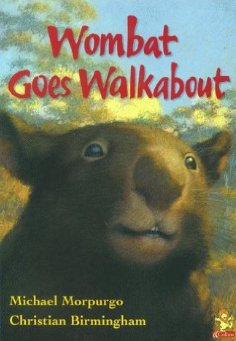
His first short book, published in 1974, was It Never Rained, an interconnected narrative about five children. By 1999 Mopurgo was ready to publish Wombat Goes Walkabout, with wonderful illustrations by Christian Birmingham. A great story about digging holes and how a wombat can save the day.
1982 saw the release of War Horse, perhaps Mopurgo’s most famous creation. The exhibition offers the visitor a display of many of the notebooks, first drafts, corrections and re-typed double spaced manuscripts that drove the creation of this seminal work.
This series of displays offers, we thought, a powerful illustration of how writing is both a physical and an intellectually layered process, but which requires a gritty determination to see the story through to the final end – publication. It is this revisiting and deterministic approach to his craft of writing that makes a Mopurgo novel so dramatic and engaging we suspect.
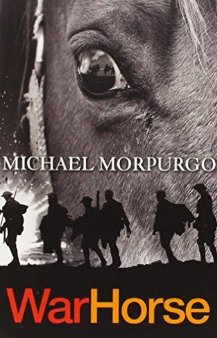
In the exhibition narrative Michael Morpurgo states that his engagement with a story ‘…can be measured by the size of his handwriting in his notebooks‘. The smaller the hand written text the more intensely the creative muse has gripped him that day.
To an archivist this is vital in determining the writers emotional condition on any particular creative day. As his pen moves rapidly across the notebook page, Michael has left a marker, a measure of intensity, for later researchers seeking to determine his emotional or creative state. Something a plastic keyboard, no matter how powerful the micro-processor it is connected to, could ever offer the interested reader in years to come.
Looking at the Morpurgo ‘war’ material, we pondered on what must be a pivotal issue for the contemporary archivist or researcher. With ready access to technology, publishing processes and cloud storage – how will future archivists and seekers of process engage with material that is electronic and resting, potentially, in a thousand different formats, storage facilities and locations around the globe.
Interestingly, MIT Technology Review has just published an article on the use of computing and data mining techniques to show that there are, it contests, only six basic ’emotional arcs’ in storytelling. These are…
…a steady, ongoing rise in emotional valence, as in a rags-to-riches story such as Alice’s Adventures Underground by Lewis Carroll. A steady ongoing fall in emotional valence, as in a tragedy such as Romeo and Juliet. A fall then a rise, such as the man-in-a-hole story, discussed by Vonnegut. A rise then a fall, such as the Greek myth of Icarus. Rise-fall-rise, such as Cinderella. Fall-rise-fall, such as Oedipus.
Source: https://www.technologyreview.com/s/601848/data-mining-reveals-the-six-basic-emotional-arcs-of-storytelling/ Article – Data Mining Reveals the Six Basic Emotional Arcs of Storytelling Accessed: 09.07.2016
We are intense users of the notebook and pen ourselves, in our ordinary workaday lives, but have to recognise that research and analysis would now be immeasurably diminished without technology. We wondered, travelling through the Michael Morpurgo exhibition, an historical audit trail of the creative mind, what other contemporary children’s and young adult writers take on ‘techno’ is today?
Perhaps this is a Seven Stories seminar series in the making? Pen or Processor, the creative methodology in contemporary children’s literature. We would buy a ticket! (Ed.)
A visual treat:
Towards the end of the exhibition content is a section dedicated to Michael Morpurgo’s artistic collaborators, the artists who have contributed to the written work.
It offers the visitor a fascinating insight into how the imagination is populated by the story, how the psyche is suggested a character and landscape by Michael Morpurgo’s writing. It is also, within the context of this article, a soaring endorsement of the power and durability of putting a hand to paper. Surely no machine can replace the creative evocation of story by the artists below?
The work on display includes artwork from Quentin Blake, Gary Blythe, Peter Bailey, Christian Brimingham and Tony Kerins amongst others. We particularly warmed to the diversity of images in the exhibition that depicted the sea. Whether Kensuke’s Kingdom or When the Wales Came, the original cover art to be seen provokes an imaginative dream of action, wind, water and a tale to be told.
We loved it.
(A list of artists on show…Gary Blythe, Quentin Blake, Loretta Schauer, Gemma O’Callaghan, Michael Foreman, Sarah Young, Sam Usher, Peter Bailey, Faye Hanson, Francois Place, Emma Chichester-Clark, Christian Birmingham and Tony Kerins.)
It was wonderful to see this collection of individual artistic work within the context of the Seven Stories Michael Morpurgo exhibition. But each artist has a separate body of work which is lively, imagination capturing and enchanting in equal measure. We hope you can use the links above to explore this on-line collection ‘gallery of galleries’ too.
Getting to Seven Stories NE! 2PQ :
If you leave the impressive Newcastle Central Station and turn right down towards Quayside, you can turn left along Quayside and walk, past the Pitcher and Piano until you come to St. Ann’s Steps on the left. Ascend them. At the top, look back down the river to the bridges receding into the distance. Turn and cross the road and right down to Cut Bank on the left, following the river left along for a couple of hundred yards and Seven Stories will apppear on your right.
The journey there, if the sun is shining, can be as uplifting as your visit to The National Centre for Children’s Books. This is a fascinating insight into the work of our national story teller. Seven Stories offers a whole rainbow of experience around ‘the children’s book’, whether a holidaying family looking to stimulate young imaginations, a visit to the cafe and bookshop, or a serious academic look at the sweep of children’s literature.
Editor Notes:
‘Seven Stories was able to support the acquisition from Michael Morpurgo through support from Heritage Lottery Fund’s ‘Collecting Cultures’ programme, which has been awarded to Seven Stories in recognition of the museum’s national role in telling a comprehensive story of modern British children’s literature’.
Source: Seven Stories web site. Accessed 09.07.2016 See http://www.sevenstories.org.uk/collection/collection-highlights/michael-morpurgo
The exhibition is delivered and developed through a new Knowledge Transfer Partnership (KTP) between Seven Stories and Newcastle University’s School of English Literature, Language and Linguistics.
The KTP is possibly the first of its kind between a university English department and an external organisation, and is being funded by InnovateUK and the Arts & Humanities Research Council (AHRC).
You can read Dr. Jessica Sage’s blog for more insights into her exploration of the archive here.
Image: The Shining Tyne 2016: Tim Smith MA, FRSA

